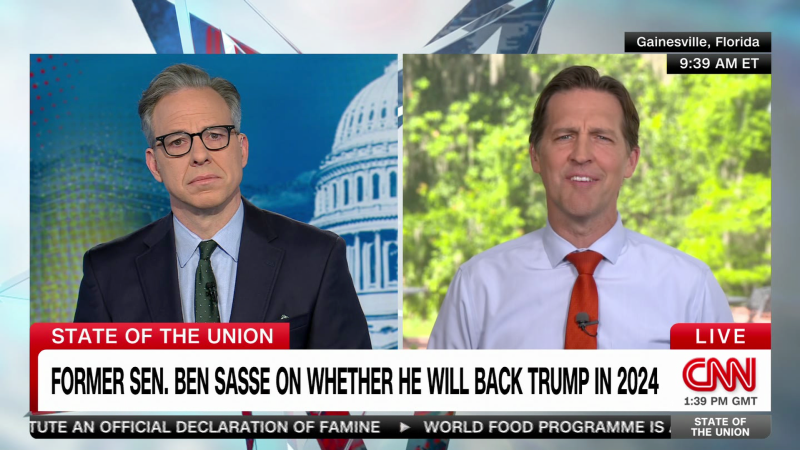Three mornings a week, Herminia Ibarra makes her way to a fleet of sparkling electric vehicles lined up in a dusty alley alongside a former diesel repair shop. Of the five Chevy Bolts, three Tesla Ys, two Volkswagen e-Golfs and a BMW i3, she always tries to snag her favorite: the red Bolt set up with her Bluetooth. In this E.V., she will pick up the two retired farmworkers who are her regular clients and ferry them on two-lane roads to their dialysis appointments 20 miles away.
Ms. Ibarra is a raitera, a term for the practice of neighbors providing rides to community members in need. The shop, which has a Mexican flag wrapped around its staircase, is the nerve center of Green Raiteros, an E.V. ride-sharing initiative in Huron, Calif., that shuttles low-income residents, many of them elderly, to medical appointments for free.
Ms. Ibarra, behind the wheel of the red Bolt, is what its proponents call “mobility justice” in action: an effort to address the reality that low-income communities most affected by pollution from diesel trucks, highways and other sources have had the least access to zero-emission vehicles.
Enter the Green Raiteros. Born of a lack of public transit, a concern for the environment and stubborn resolve, the program was masterminded by the Latino Equity Advocacy & Policy Institute, a nonprofit founded by Rey León, Huron’s mayor.
Similar efforts are underway elsewhere in California, New York and other areas, along with a growing push in Washington, D.C., to subsidize E.V. programs. Under the Bipartisan Infrastructure Law, the federal government is providing $700 million in grants to local governments to set up charging infrastructure in underserved areas.
The goal of all these initiatives is to give more people in low-income communities access to cleaner forms of transportation. In Huron, the result of the local effort is 30 charging stations placed strategically around the city, among other projects aimed at lowering carbon emissions in the area.
Ringed by vast acres of garlic and tomato fields, Huron is a small agricultural city in “the Heart of the Valley,” as a sign on the main road into town announces. Of Huron’s 6,200 residents, 95 percent are Latino and about 50 percent are immigrants. And despite being just 50 miles from Fresno, the state’s fifth largest city, Huron is too remote for Uber or Lyft to operate.
Mr. León has referred to the tradition of ride sharing in Latino communities as “Indigenous Ubers.” He is the son of a migrant worker brought to the U.S. under the Bracero program that ran from 1942 to 1964, and a graduate of University of California, Berkeley. The emotional resonance of ride-sharing came early: When Mr. León was a child, his uncle worked as a raitero. “He was a tall man with a big sombrero and a tiny car — a green Pinto,” he recalled. “He was like Curious George with the Man with the big Yellow Hat. Big guy, small car.”
When Mr. León’s uncle wasn’t available, the family’s transit options were limited. Mr. León remembers that he and his mother had to take the county bus to visit a critically injured cousin in the hospital some 55 miles away, an exhausting three and a half-hour journey with at least 16 stops.
For Mr. León, the ordeal from his youth laid the groundwork for Green Raiteros. Electric vehicles that usually zip around the dappled hills of wealthy Malibu or Marin County are now accessible to “maintainers of the food chain,” as Mr. León describes his majority farmworker residents.
Huron’s average household income is $35,000, and many people, Mr. León said, spend 30 to 40 percent of their monthly wages on gas-powered cars that frequently break down. Residents breathe air consistently ranked as some of the country’s worst.
“Like affordable housing, mobility and transportation are a basic human right,” said Ethan Elkind, director of the climate program for the Center for Law, Energy & the Environment at University of California Berkeley law school. In low-income, ecologically vulnerable areas like Huron, he said that it often requires multiple sources of public funding to get the necessary infrastructure up and running — charging stations especially — including staff to apply for the grants in the first place.
Mr. León launched Green Raiteros in 2018 with private foundation money and half a million dollars from the settlement of a legal case between NRG Energy and the California Public Utilities Commission. The Teslas were courtesy of a $1 million grant from the California Air Resources Board, the state air quality regulator charged with developing programs to fight climate change. (A statute requires that at least 35 percent of certain climate investment projects benefit low-income communities and households). The $150,000 annual operating budget is largely a mix of funding from the air board, state agencies and philanthropies, supplemented by a recent contribution from General Motors.“It’s always about playing catch-up,” Mr. León said.
Tax credits and consumer rebates for purchasing E.V.s tend to be of little use for people for whom owning a car is a significant financial hurdle. “Owning a car is a poverty perpetuator,” Mr. León observed, sitting in the Green Raiteros dispatch center behind the faded brown stucco colonnades of the main street.
Ms. Ibarra, like some Green Raiteros drivers, started out as a client. Her husband, Victor Garcia, worked as an agricultural truck driver and needed access to the sole family car, so Ms. Ibarra relied on raiteros to get around. Gregorio Hernandez, 69, one of her regulars and a retired farmworker, was an original “green raitero” but became unable to drive after two strokes. He usually rides in Ms. Ibarra’s Bolt along with Enrique Contreras, a fellow dialysis patient who said it would otherwise cost $40 a day to pay someone to drive him.
Ms. Ibarra’s route to the dialysis center is a slice of Central Valley life, bisecting miles of pistachio and almond orchards, and cotton fields shedding fluff along the shoulders. She passes local employers like a major state prison and the sweltering tomato paste processing plant where she used to work. In the car, the three chitchat about what’s growing, the job scene in the fields and, of course, the weather. Ms. Ibarra always waits for the two men to finish their dialysis appointments, then drives them home.
She cares about the planet but likes E.V.s chiefly because she hates pumping gas, she said. She tracks mileage on her iPhone, pulling up to a charger at day’s end. At night, the program’s cars reside behind a chain-link fence guarded by two pit bulls, Princess and Puki.
“It’s important because many people don’t drive, don’t have cars and there is nobody to take them,” Ms. Ibarra said. “They are all farmworkers and would have to lose a day of work.”
Green Raitero’s clients, about 120 in total, either sign up for rides in advance or just wander into the former repair shop. Many “still have old-fashioned flip phones,” said David Mercado, the dispatcher and a longtime driver. “They can call day or night. We’re a tight community.”
Inventive models for E.V. ride sharing are flourishing elsewhere, from rural, unincorporated communities outside Fresno to a new car-sharing program bringing E.V.s to affordable housing complexes in eight states. A pioneering public-private effort in Los Angeles, BlueLA powered by Blink Mobility, began in 2015 with funding from California Air Resources Board and the city’s Department of Water and Power. It offers car sharing at discounted rates for low-income members: $1 per month for membership and 15 cents a minute in rental fees.
At Rancho San Pedro, a largely Latino public housing complex abutting the heavily polluted, highly trafficked Port of Los Angeles, residents campaigned for a $100,000 state-funded pilot launched by the nonprofit Los Angeles Cleantech Incubator to bring two electric vehicles and charging stations to this transportation desert more than 20 miles from downtown.
The communal Nissan Leafs, renting for $5 an hour, have been a hit with residents, with prime time starting at 6 a.m. for school drop-offs. “If the car breaks down, you don’t have to repair it,” said Maria Montes, who coaches others on how to use the E.V. sharing program.
Other E.V. pilots, like the nonprofit Miocar, based at affordable housing developments throughout the Central Valley, have relied on public investments.
The most far-reaching concept is the country’s first municipally owned car share, in Minneapolis and Saint Paul, Minn., a fleet of 170 electric vehicles and 70 charging spots covering a 35 square-mile area with a high concentration of poverty. Evie Carshare debuted last year, subsidized by $7 million in federal grants, $4 million from Minneapolis-based Xcel Energy Inc. and funding from both cities.
But collectively, these nonprofit programs face broader hurdles. Because they offer below-market pricing, their long-term financial sustainability and ability to scale up can be uncertain. “It’s an inversion of the dominant car-sharing model, which is a for-profit operation in affluent urban areas with high-quality transit,” said Caroline Rodier, associate director of the Urban Land Use and Transportation Center at UC Davis, who has studied Miocar and rural car sharing.
Obtaining auto insurance can also be a struggle, said Creighton Randall, the chief executive of the Mobility Development Group, which specializes in launching such projects.
Ithaca Carshare in upstate New York, which has operated for 15 years with 30 cars and 1,500 members, recently went on hiatus after the two remaining private insurers of car sharing left the New York market. Last week, the state passed legislation allowing nonprofits to pool insurance, allowing programs like the one in Ithaca to secure affordable plans and continue operating.
And in Cantua Creek, Calif., a tiny Central Valley town (population 471), the much-anticipated arrival of four E.V.s and six chargers in November 2019 through a state program was short-lived. The cars were put on hold at the start of the pandemic and later unceremoniously removed.
Poetically named “Van Y Vienen” (meaning “they come and go”), community members could volunteer as drivers through an app set up by Green Commuter, a private ride-sharing company. For residents like Rosario Rodriguez, 47, who lives in neighboring Three Rocks and does not drive, this was a huge relief.
The $1.9 million project included $749,800 in California air board funding. Its demise “speaks to the larger issue of how we invest in public transit that goes beyond traditional projects,” said Veronica Garibay, co-executive director of Leadership Counsel for Justice & Accountability, a legal and social justice organization that works with low-income, rural communities.
The cars provided residents with a fleeting glimpse of independence. “They were rides with people I could trust,” Ms. Rodriguez said, citing easy trips to her mammograms, dental appointments and food shopping in Fresno, 50 miles away. “Then one day, the cars were gone.”
“To tell you the truth, I just feel helpless and disappointed,” she said. “It’s not a privilege or a luxury to have a form of transportation. It is a need.”







More News
DNA Tests and Stranded Bodies: Ukraine’s Struggle to Name Its Dead
Divided Trump campaign weighs joining TikTok, the app he tried to ban
Dozens Are Arrested in Pro-Palestinian Protest at Art Institute of Chicago